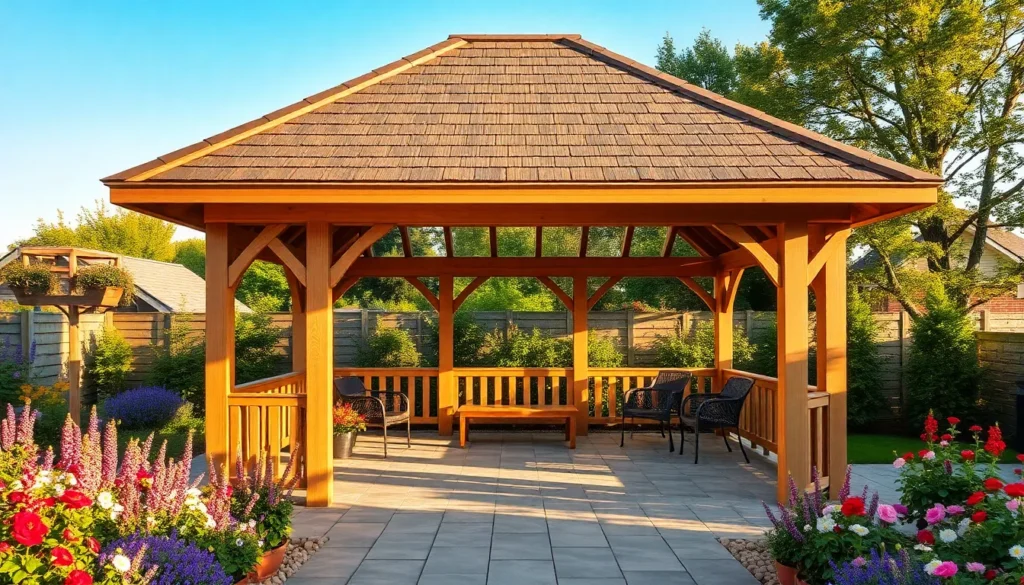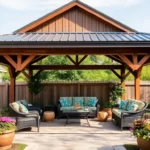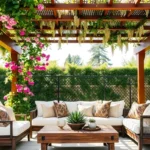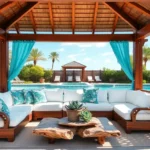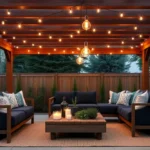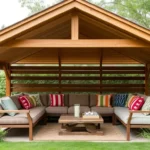Transforming your backyard into a personal oasis begins with the perfect shelter, and nothing defines a space quite like a gazebo. Whether you’re a beginner taking your first steps into outdoor design or a seasoned homeowner seeking fresh inspiration, the right roof design can elevate your gazebo from functional to fabulous, providing both charm and protection from the elements.
In this article, we’ll explore 12 creative gazebo roof designs that blend aesthetic appeal with practicality. From classic to contemporary, you’ll discover options that suit any style and budget, empowering you to create a cozy retreat that reflects your unique taste. Join us as we unlock the potential of your outdoor living space, ensuring it becomes a cherished extension of your home.
Exploring Classic Gable Roof Styles
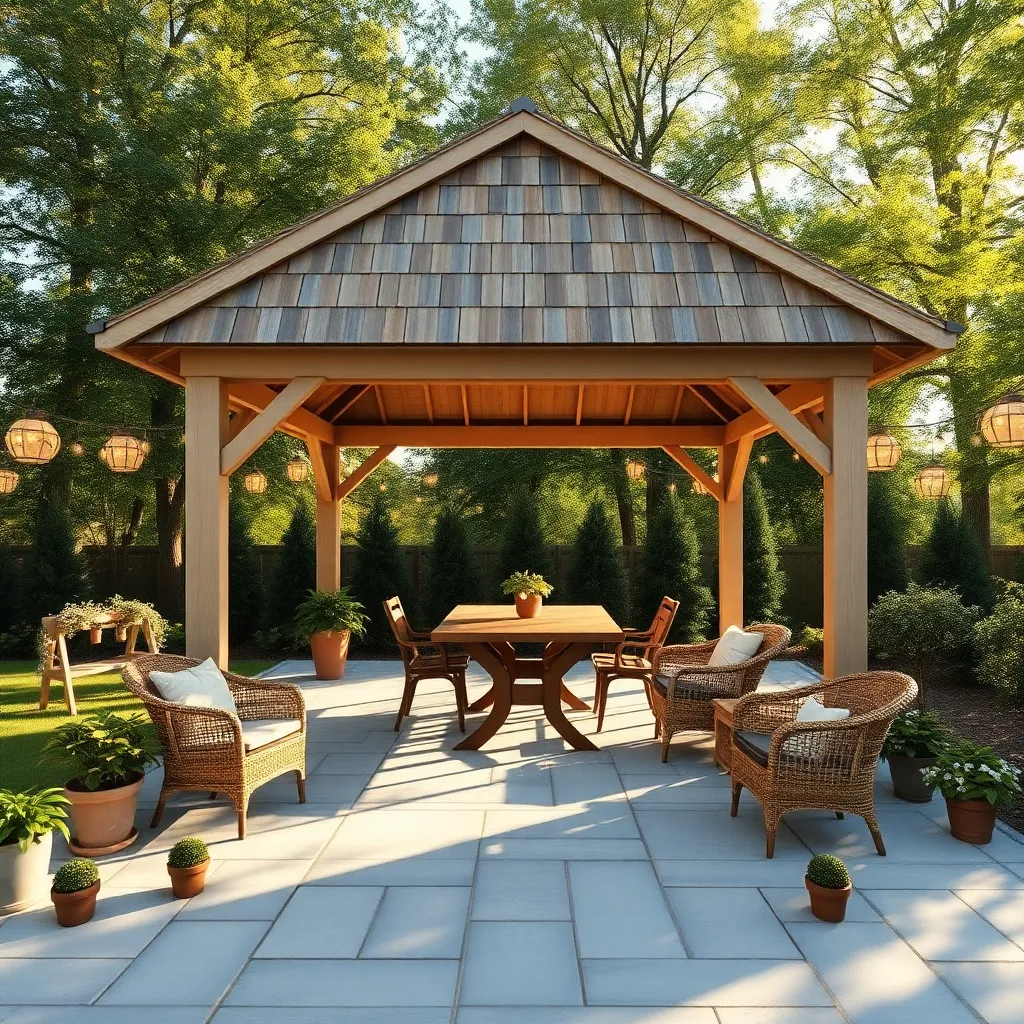
The classic gable roof style is a timeless choice for gazebos, offering both aesthetic appeal and practical benefits. Its triangular shape efficiently sheds water, making it ideal for regions with heavy rainfall. For beginners, consider using pre-cut trusses and pressure-treated wood to ensure durability and ease of construction. More advanced builders might explore using metal roofing for a sleek finish and enhanced longevity, particularly if your gazebo is exposed to harsh weather conditions.
When designing your gable roof gazebo, attention to detail is key. Ensure that the pitch of the roof is at least 30 degrees for optimal runoff and that the structure is anchored securely to withstand winds. Materials like cedar or redwood are excellent for their natural resistance to decay and insects, adding both beauty and longevity to your project. For an elevated look, integrate decorative brackets or exposed beams, which provide additional structural support while enhancing the shelter’s visual appeal. With these strategies, your gazebo will not only be functional but also a stunning focal point in your outdoor space.
Crafting Elegant Hip Roof Designs
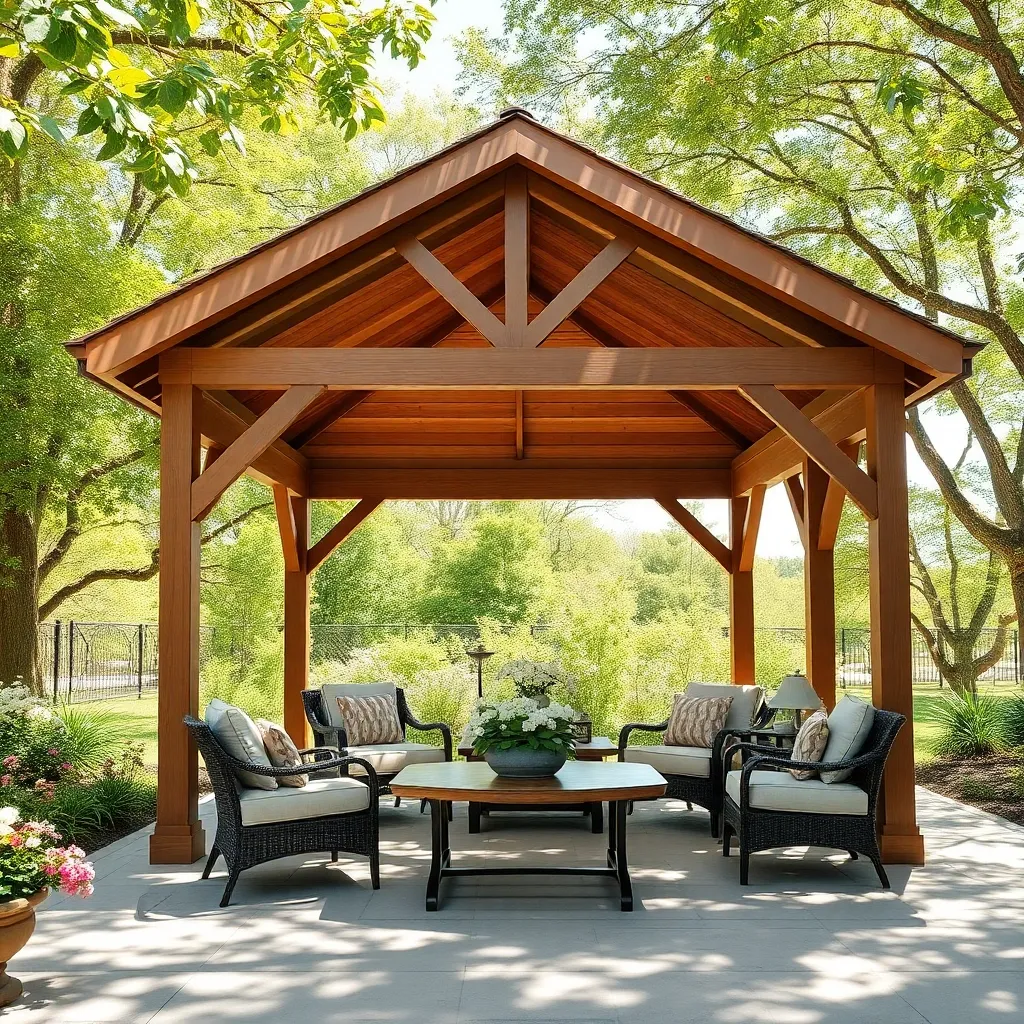
Crafting an elegant hip roof for your gazebo involves a few key considerations to ensure both style and functionality. The hip roof is known for its all-sides sloping design, which provides excellent stability and wind resistance. For beginners, using materials like cedar or pressure-treated wood can help achieve a durable structure. When planning dimensions, remember that the hip roof’s symmetrical design requires precise measurements for each side to meet at a central ridge. Consider incorporating a slight pitch to aid in water runoff, which is crucial for longevity.
To elevate the design, experienced builders can experiment with advanced techniques such as adding a decorative cupola or skylight to the roof’s center. Ensure the roof structure is supported by sturdy beams, ideally made from treated timber or metal, to handle the additional weight. For a polished look, you can use shingles or tiles that complement your outdoor décor, with colors that blend seamlessly into the surrounding environment. A hip roof not only adds elegance to your garden retreat but also enhances its durability, making it a practical choice for various climates.
Enhancing Space with Pavilion Roofs
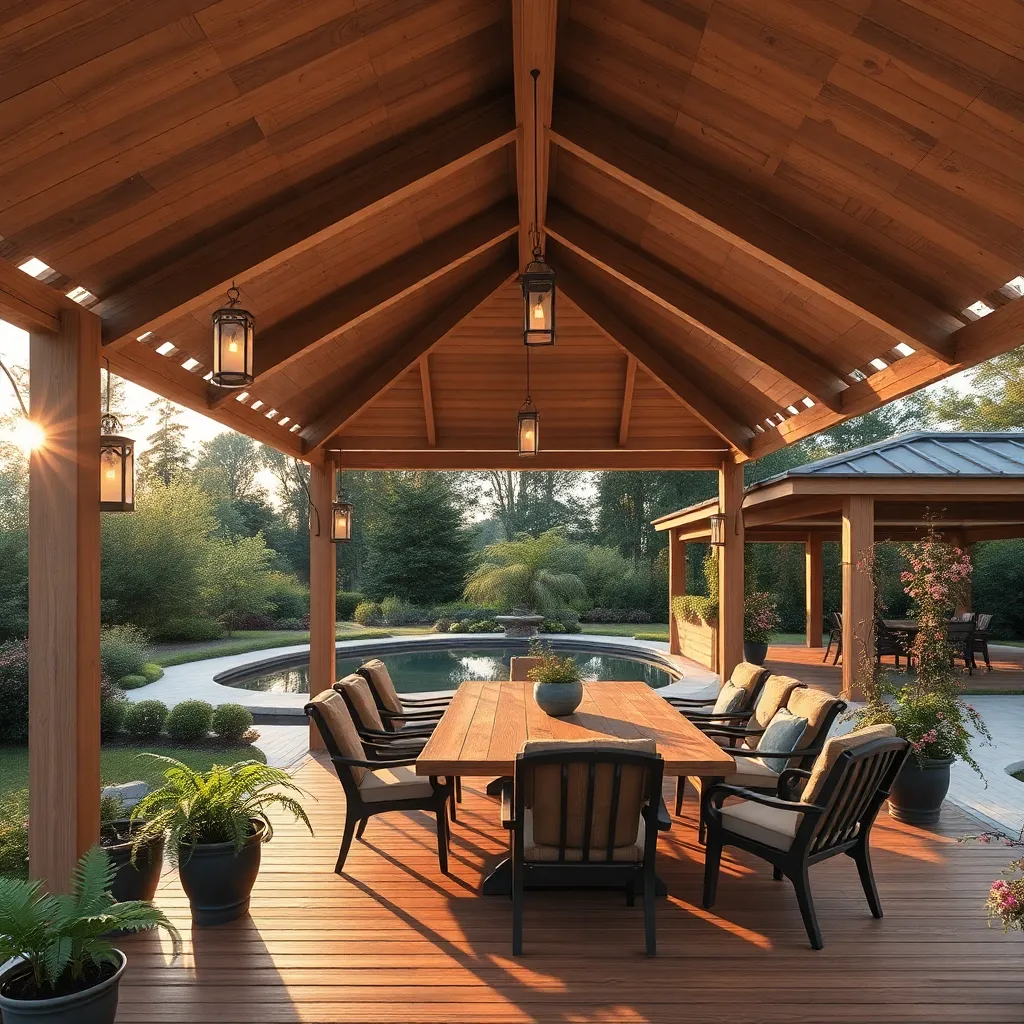
Integrating a pavilion roof into your outdoor space can dramatically enhance both functionality and aesthetics. Opt for durable materials like metal or treated wood to withstand various weather conditions and provide a long-lasting structure. Beginners can start with a simple gable design, which offers excellent rain runoff, while more experienced DIY enthusiasts might try a complex tiered roof for added visual interest.
To make the most of your pavilion, consider integrating practical elements like adjustable louvers or polycarbonate panels, which allow for controlled light and ventilation. Ensure your pavilion posts are securely anchored, using concrete footings for stability in windy conditions. Experienced builders might explore incorporating built-in lighting or heating options to extend the usability of the space throughout different seasons. Here are a few tips to get you started:
- Use at least 2×6 lumber for rafters to ensure robust support.
- Choose UV-resistant paint or stain to protect wood surfaces.
- Consider a roof pitch of 4:12 for adequate water drainage.
Modern Flat Roof Concepts

Modern flat roof concepts offer a sleek and minimalist approach to outdoor shelters, ideal for homeowners seeking a contemporary aesthetic. Opt for durable materials such as metal or reinforced concrete to withstand weather elements, ensuring longevity and low maintenance. For beginners, starting with a simple flat roof design using treated wood beams can provide both functionality and an easy-to-construct solution. Incorporate clean lines and neutral color schemes to complement your home’s existing architecture.
For those ready to explore advanced techniques, consider integrating green roof systems to enhance insulation and create an eco-friendly environment. This involves layering waterproof membranes and soil to support plant growth. Additionally, installing LED lighting beneath the roof can enhance evening use, adding ambiance and visibility. When planning dimensions, ensure the roof extends slightly beyond the structure’s edges to provide optimal shade and protection from rain. This approach not only elevates the modern aesthetic but also enhances the functionality of your outdoor space.
Integrating Rustic Thatched Roofs

Integrating a rustic thatched roof into your gazebo design can bring a charming, natural aesthetic to your outdoor space. For beginners, using traditional materials like straw or reeds can create an authentic look, but it’s crucial to ensure they’re properly dried to prevent decay. Consider using water reed or Norfolk reed, which are durable and known for their weather resistance. These materials should be laid in thick layers, typically around 12 inches, to provide insulation and durability.
For those with more experience, incorporating advanced techniques such as using a breathable waterproof membrane beneath the thatch can enhance longevity and weatherproofing. Ensure the roof pitch is steep enough, ideally between 45 and 55 degrees, to allow for effective water runoff and prevent water pooling.
- Maintain the thatched roof annually by checking for signs of wear and resealing as necessary.
- Consider adding decorative elements like carved wooden beams or rustic gables to enhance the overall look.
This combination of basic and advanced strategies ensures your gazebo not only looks beautiful but also stands the test of time.
Sustainable Green Roof Innovations
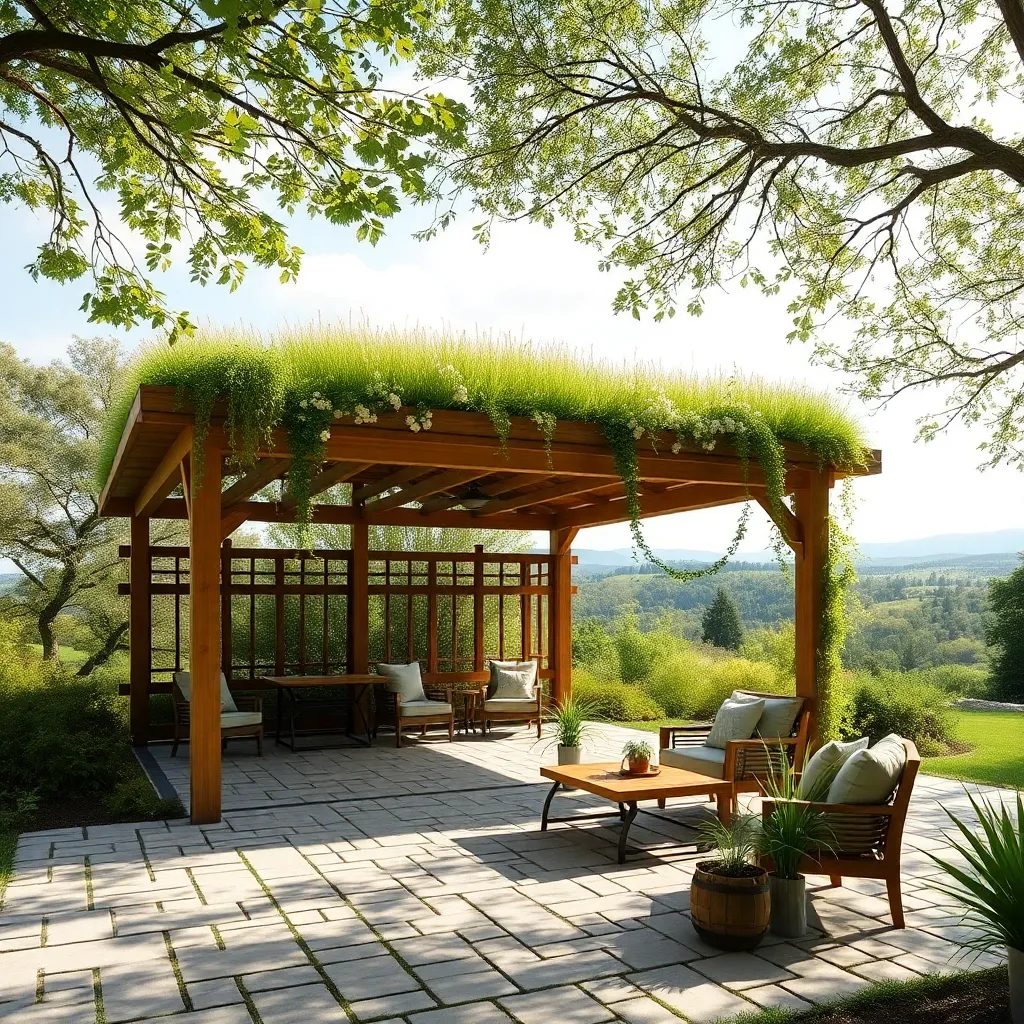
Transform your gazebo into an eco-friendly haven with a sustainable green roof. Begin with a robust structure capable of supporting the additional weight, such as reinforced wood or metal beams. Select lightweight, drought-resistant plants like sedums or succulents, which require minimal maintenance. Use a waterproof membrane to protect the gazebo beneath, and consider a drainage layer to prevent waterlogging.
For those ready to take it a step further, incorporate a rainwater harvesting system by gently sloping the roof to direct water into a collection barrel. Ensure proper insulation by using a root barrier and growing medium that suits your climate and plant choices. Adding a green roof not only enhances your garden’s aesthetics but also provides insulation and supports local biodiversity. With these elements in place, you’re set to enjoy a sustainable and innovative outdoor retreat.
Charming Curved Roof Techniques
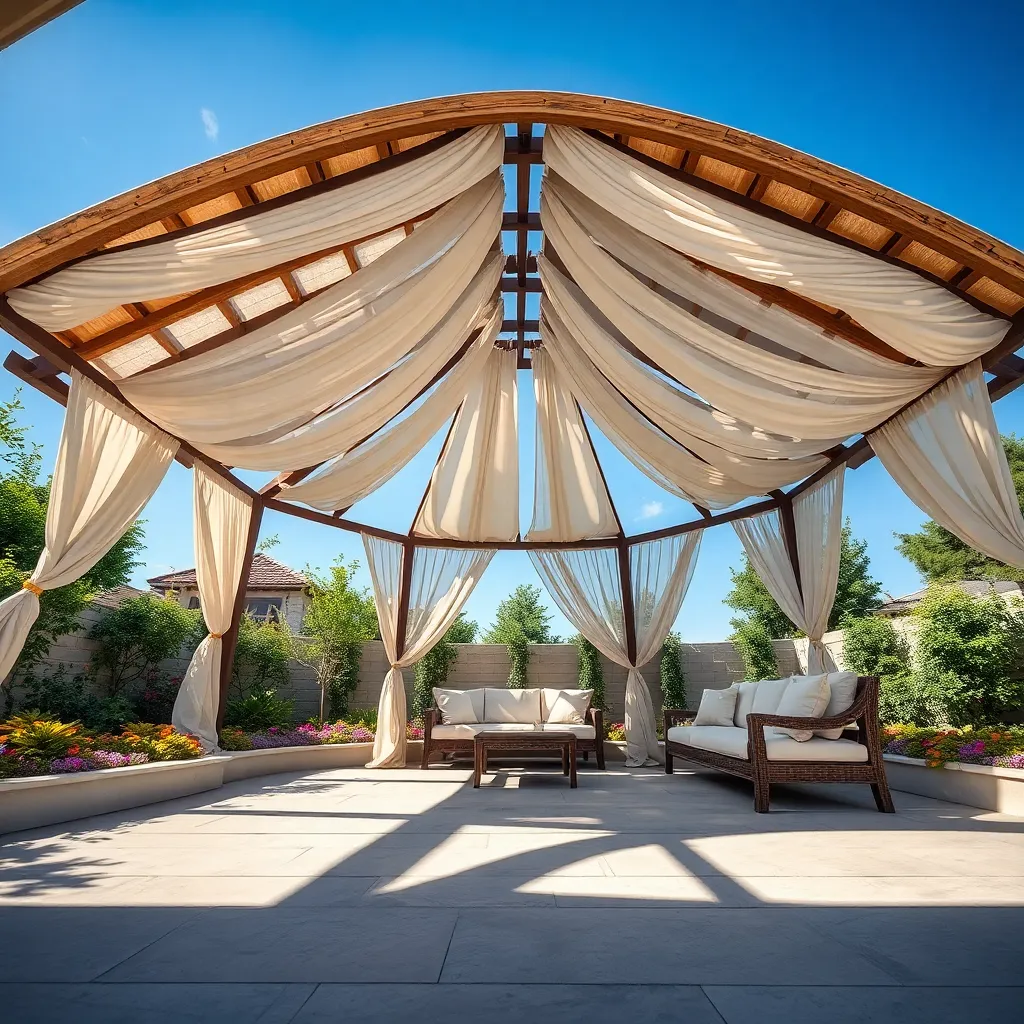
For a truly charming addition to your garden, consider a gazebo with a curved roof. This design not only adds a touch of elegance but also improves rainwater runoff. Begin with materials like durable wood or metal framing to support the arch, ensuring you use weather-resistant lumber such as cedar or pressure-treated pine. Polycarbonate panels are excellent for covering the roof, offering both durability and a sleek appearance while allowing natural light to filter through.
Advanced builders might opt to incorporate a double-curve or “saddle” roof design for added aesthetic appeal. For construction, utilize flexible plywood or thin metal sheets that can be easily bent to achieve the desired curve. Reinforce the structure with cross bracing beneath the arch to maintain stability, especially in areas prone to high winds. To enhance durability, use stainless steel fasteners and apply a protective sealant to all wooden components. This approach ensures your curved roof gazebo not only looks stunning but also stands the test of time.
Stylish Pergola Roof Variations
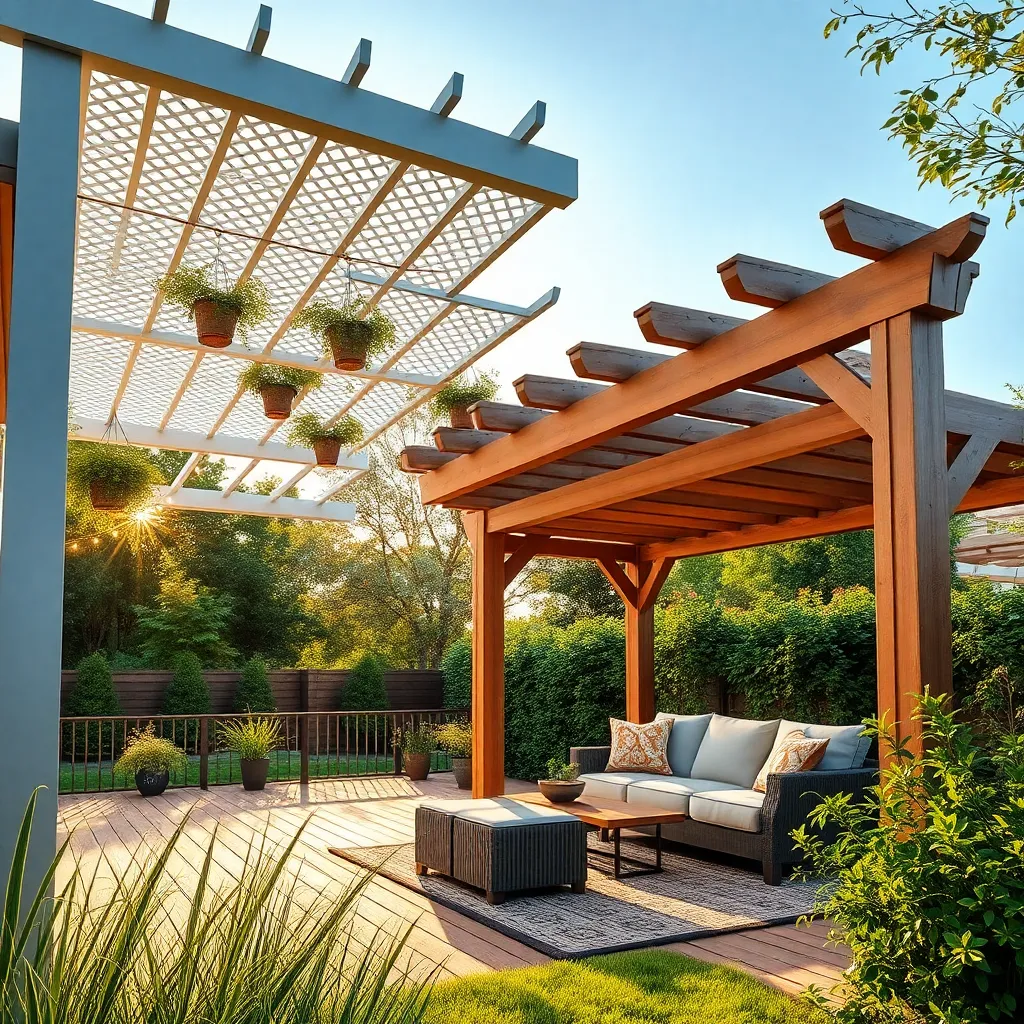
Transform your outdoor space with a stylish pergola roof, offering both functionality and aesthetic appeal. Start by choosing durable materials like cedar or aluminum, which provide longevity and a modern touch. For a basic yet elegant design, consider using lattice panels, which allow for both sunlight and ventilation—perfect for growing climbing plants like wisteria or jasmine. Install the panels at a slight angle to ensure effective water drainage and to avoid pooling on the roof.
For those seeking a more advanced design, integrating retractable fabric can offer versatility, allowing you to adjust sunlight exposure throughout the day. Opt for weather-resistant fabrics such as acrylic or polyester for durability against the elements. Incorporate motorized systems for ease of use, especially in larger pergolas, providing a seamless transition between open-air and shaded settings. Whether you’re a beginner or a seasoned DIY enthusiast, these pergola roof variations can elevate your outdoor living experience.
Illuminating with Skylight Inserts
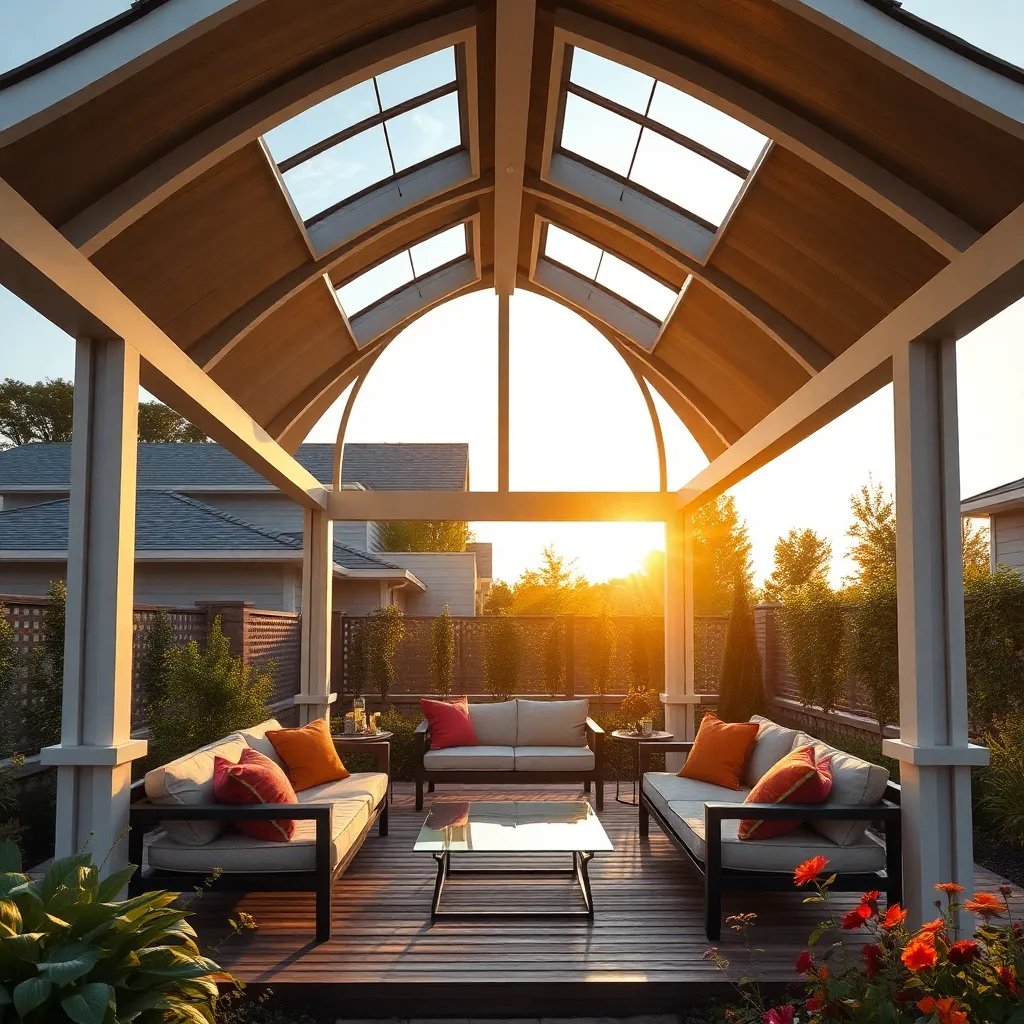
Adding skylight inserts to your gazebo roof can transform your outdoor space by inviting natural light while maintaining shelter. Opt for durable materials like polycarbonate or tempered glass, known for their strength and UV protection. Beginners can start with prefabricated skylight panels that fit standard gazebo dimensions, ensuring an easy installation process. For those with more experience, customizing the size or shape of the skylight offers a tailored aesthetic that complements your overall design.
Incorporating skylights requires careful planning to balance aesthetics and functionality. Consider placing the skylights strategically to maximize light during peak sunlight hours without overheating the space. For advanced builders, integrating vented skylights can help regulate temperature and airflow, keeping the gazebo comfortable year-round. Remember to ensure proper sealing around the skylights to prevent leaks, using weather-resistant caulking for a secure fit.
Artistic Dome Roof Inspirations
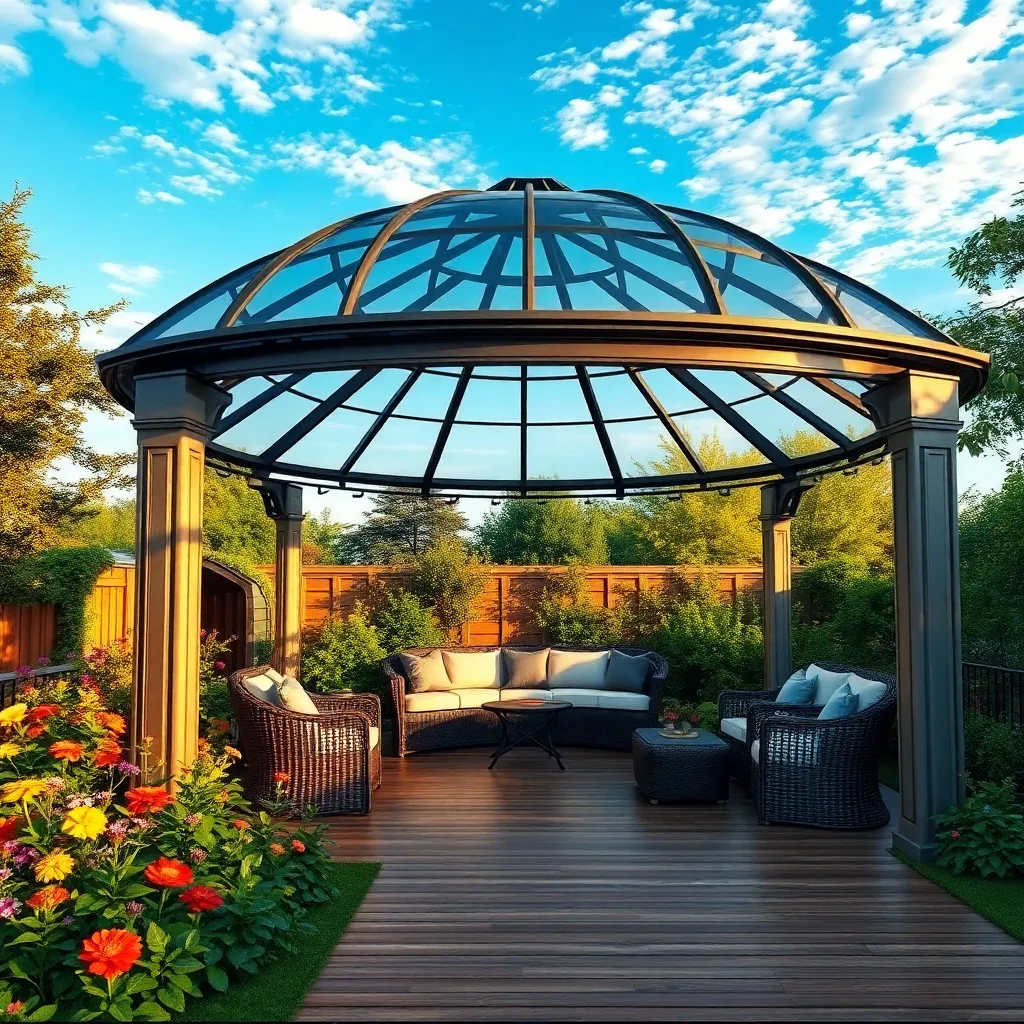
Transform your gazebo with an artistic dome roof, a design that combines elegance and functionality. Start by choosing materials such as wrought iron or steel for the frame, which offer durability and create intricate patterns. For beginners, consider using pre-fabricated dome kits that simplify installation, while experienced DIYers can explore custom designs. Incorporate glass or acrylic panels to add a unique flair and allow natural light to flow through, creating a warm and inviting space beneath.
Enhance your dome roof with decorative elements like finials or intricate scrollwork for a touch of sophistication. Opt for weather-resistant finishes to protect your structure from the elements, ensuring longevity. For those looking to add a modern twist, integrate solar paneling within the dome design to power outdoor lighting. Additionally, consider using a combination of contrasting colors in the metalwork to make your gazebo a standout feature in your garden. This approach not only elevates the aesthetic appeal but also ensures practicality and sustainability in your outdoor space.
Weatherproofing with Metal Roofs
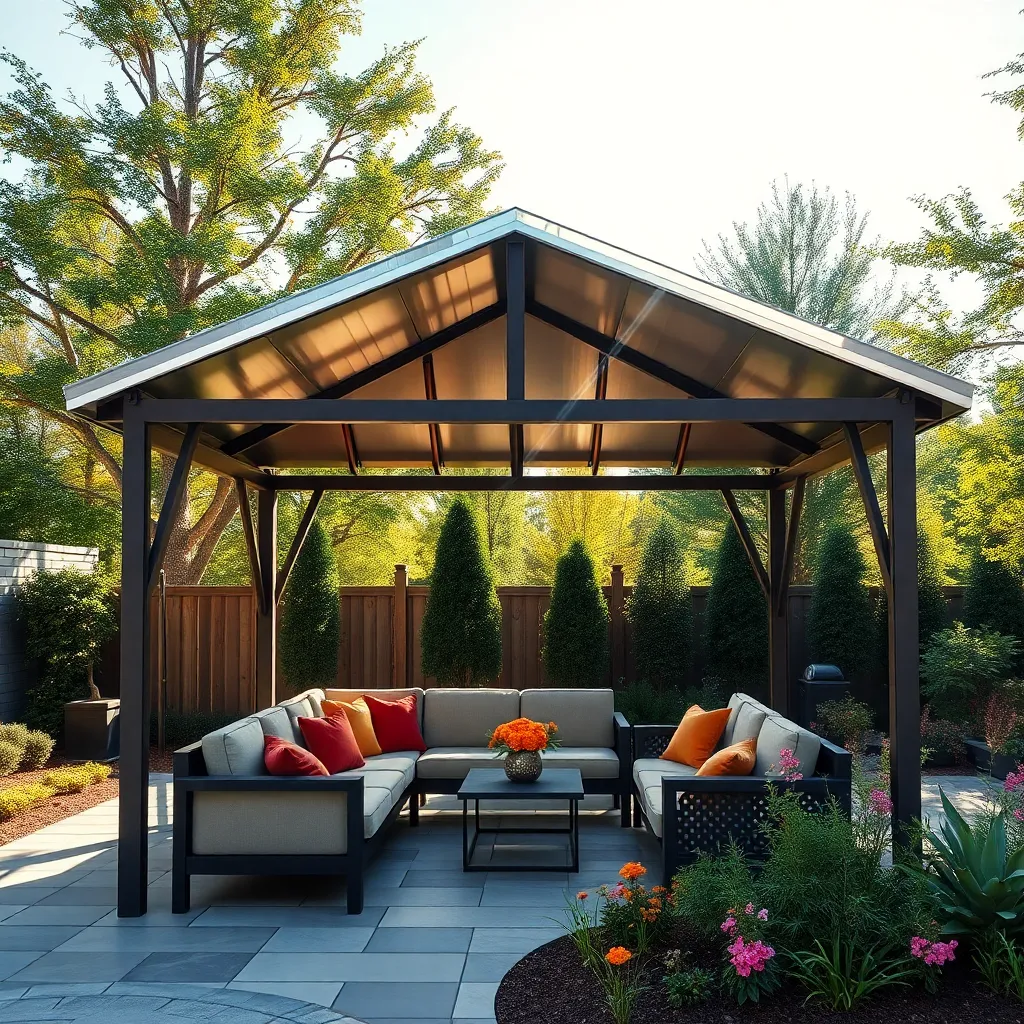
Metal roofs are an excellent choice for weatherproofing your gazebo, offering durability and a sleek look. Start with high-quality materials such as galvanized steel or aluminum, which are resistant to rust and capable of withstanding harsh weather conditions. For beginners, consider opting for pre-coated or painted metals to reduce maintenance, while experienced DIYers might explore custom patinas for a unique finish. Proper insulation beneath the metal can also help in managing temperature extremes and minimizing noise during rain.
To ensure longevity, focus on the installation details. Utilize a slight slope, generally around 3-5 degrees, to facilitate water runoff and prevent pooling. Secure the metal sheets with weather-resistant screws and use rubber washers to seal the joints effectively. Advanced tip: Incorporate a gutter system along the edges to channel water away from the structure, preserving its integrity and preventing ground erosion. This simple addition not only enhances the functionality but also contributes to a tidy and professional aesthetic.
Dynamic Multi-Tier Roof Structures
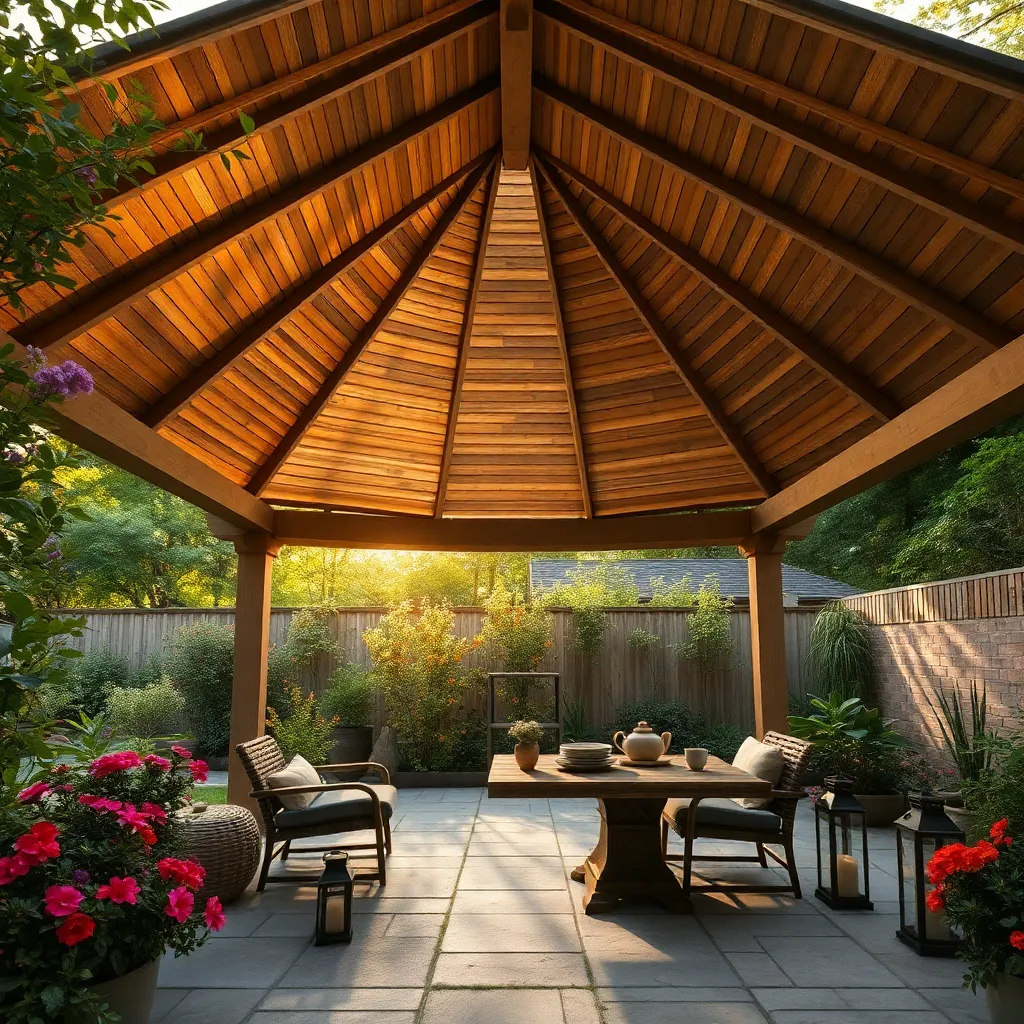
Dynamic multi-tier roof structures add a visually striking element to your gazebo while enhancing its functionality. By incorporating multiple tiers, you can create a design that not only looks sophisticated but also promotes better airflow and natural light penetration. Consider using materials like cedar or redwood for their durability and aesthetic appeal. For those looking to add a touch of elegance, integrating glass or transparent polycarbonate panels into the upper tiers can provide an unobstructed view of the sky, enhancing the overall outdoor experience.
Construction techniques for multi-tier roofs require careful planning. Start with a strong foundation and ensure that each tier is properly supported to withstand various weather conditions. For beginners, it’s advisable to stick to simple geometric shapes like squares or rectangles, which are easier to align and construct. Meanwhile, experienced builders can experiment with hexagonal or octagonal designs for added complexity and style.
- Use galvanized steel brackets for secure connections.
- Opt for a slight slope on each tier to facilitate water runoff.
- Consider incorporating weatherproofing elements such as flashing or rubberized seals at each junction to prevent leaks.
By combining creativity with practical construction, you can create a stunning and durable outdoor shelter.
Conclusion: Creating Beautiful Outdoor Spaces
As you explore the world of creative gazebo roof designs, you’re reminded of the importance of variety and creativity in relationships. Each design—whether it’s the classic A-frame or the innovative tiered roof—symbolizes a unique relationship concept. These range from the strength and support of a solid foundation to the beauty of embracing change, the necessity of balance, and the joy of shared growth. Just as each gazebo roof offers shelter and charm, these principles provide the support and inspiration needed for thriving, resilient partnerships.
Now, take action by choosing one concept that resonates most with your current relationship stage. Reflect on ways you can incorporate this principle into your daily interactions. Perhaps it’s about strengthening communication or embracing new adventures together.
To ensure these insights remain at your fingertips, save or bookmark this article. By doing so, you’ll have a handy guide to revisit whenever your relationship needs a creative boost.
Remember, the journey to relationship success is ongoing, and with each step, you’re building a more connected and fulfilling partnership. Embrace this journey with enthusiasm and let these concepts guide you towards a brighter future together.

